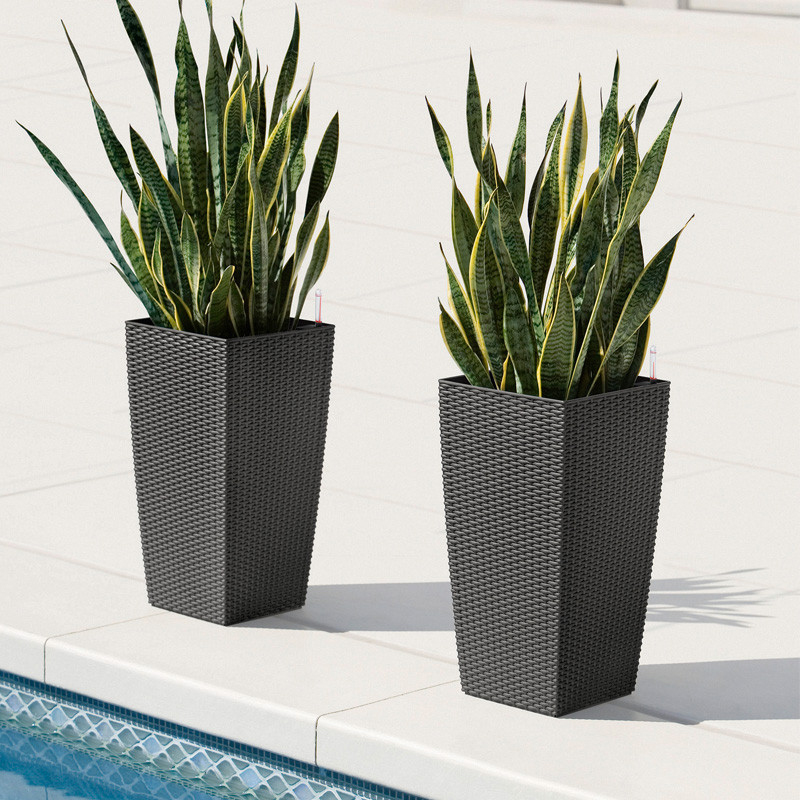As environmental awareness grows across industries, the demand for eco-friendly materials in plant pot manufacturing has seen a steady rise. Consumers today are not only seeking beautiful and functional containers for their plants, but also looking for products that align with sustainable practices. From recycled plastics to biodegradable fibers, the materials used in pot production are evolving to support a greener future. Among the various options, the use of large rattan plant pots, Coloured Plant Pots, and outdoor vegetable garden planters showcases how sustainability can blend with aesthetics and functionality.

Rattan, a natural vine that grows abundantly in tropical regions, has become a popular material for larger decorative planters. A large rattan plant pot offers a rustic, earthy appearance while being lightweight and breathable, which benefits root systems. Unlike synthetic containers, rattan is biodegradable and harvested with a small environmental impact when sourced responsibly. Many eco-conscious consumers appreciate the handcrafted feel of these pots, and their neutral tones easily match a variety of garden and home designs. When used outdoors, they require a bit of care, especially in wetter climates, but their natural appeal and low carbon footprint make them an attractive alternative to plastic options. Incorporating a large rattan plant pot into a sustainable garden setup not only reduces plastic use but also brings a natural charm to patios and interiors alike.
Plant Pots has long been favored for its durability and timeless appearance. Today, Coloured Plant Pots are increasingly produced with environmental considerations in mind. By using non-toxic glazes and energy-efficient kilns, manufacturers are finding ways to lessen the impact of plastic production. These pots are ideal for both indoor and outdoor use, providing good insulation for soil and roots. Their weight adds stability, making them a reliable choice for breezy balconies or open gardens. More importantly, Coloured Plant Pots can be reused for many years, avoiding the cycle of disposable gardening containers. Their vibrant finishes and variety of tones allow for creative expression while supporting long-term sustainability goals. Whether housing herbs in a kitchen window or framing a porch with flowering plants, these pots offer a colorful and mindful solution for plant lovers.
For those focused on self-sufficiency and healthy living, outdoor vegetable garden planters are becoming a staple in backyards and urban spaces. These planters, when made from recycled wood, untreated timber, or other sustainable composites, provide an eco-friendly base for growing food at home. Raised planters can reduce strain on the body and help control soil quality, making them practical as well as sustainable. A thoughtfully placed row of outdoor vegetable garden planters can turn even a small space into a productive garden. By using materials that won’t leach harmful chemicals into the soil, these planters help preserve the integrity of homegrown produce. Moreover, many gardeners are now integrating outdoor vegetable garden planters with rainwater harvesting systems and compost bins, creating a closed-loop system that mirrors natural cycles and reduces waste.
It’s not just about materials, though. The overall design and production process of sustainable pots must also take into account factors like transportation emissions, manufacturing waste, and end-of-life disposal. For instance, a large rattan plant pot may be locally sourced and handwoven, which less industrial waste and supports traditional craftsmanship. Similarly, Coloured Plant Pots that are made in small batches by regional artisans can reduce the environmental impact associated with large-scale production. Meanwhile, the modular nature of outdoor vegetable garden planters often allows for easy repair and reuse, extending their functional lifespan.
As more gardeners, landscapers, and homeowners become invested in sustainable living, the choices they make—from the plants they grow to the containers they use—reflect broader values around environmental responsibility. Choosing a large rattan plant pot, a set of Coloured Plant Pots, or durable outdoor vegetable garden planters made from eco-conscious materials is a step toward reducing one’s ecological footprint. These options do not sacrifice beauty or performance; rather, they demonstrate that thoughtful design and sustainability can go hand in hand in everyday gardening practices.

 English
English 日本語
日本語 Español
Español Deutsch
Deutsch عربى
عربى

